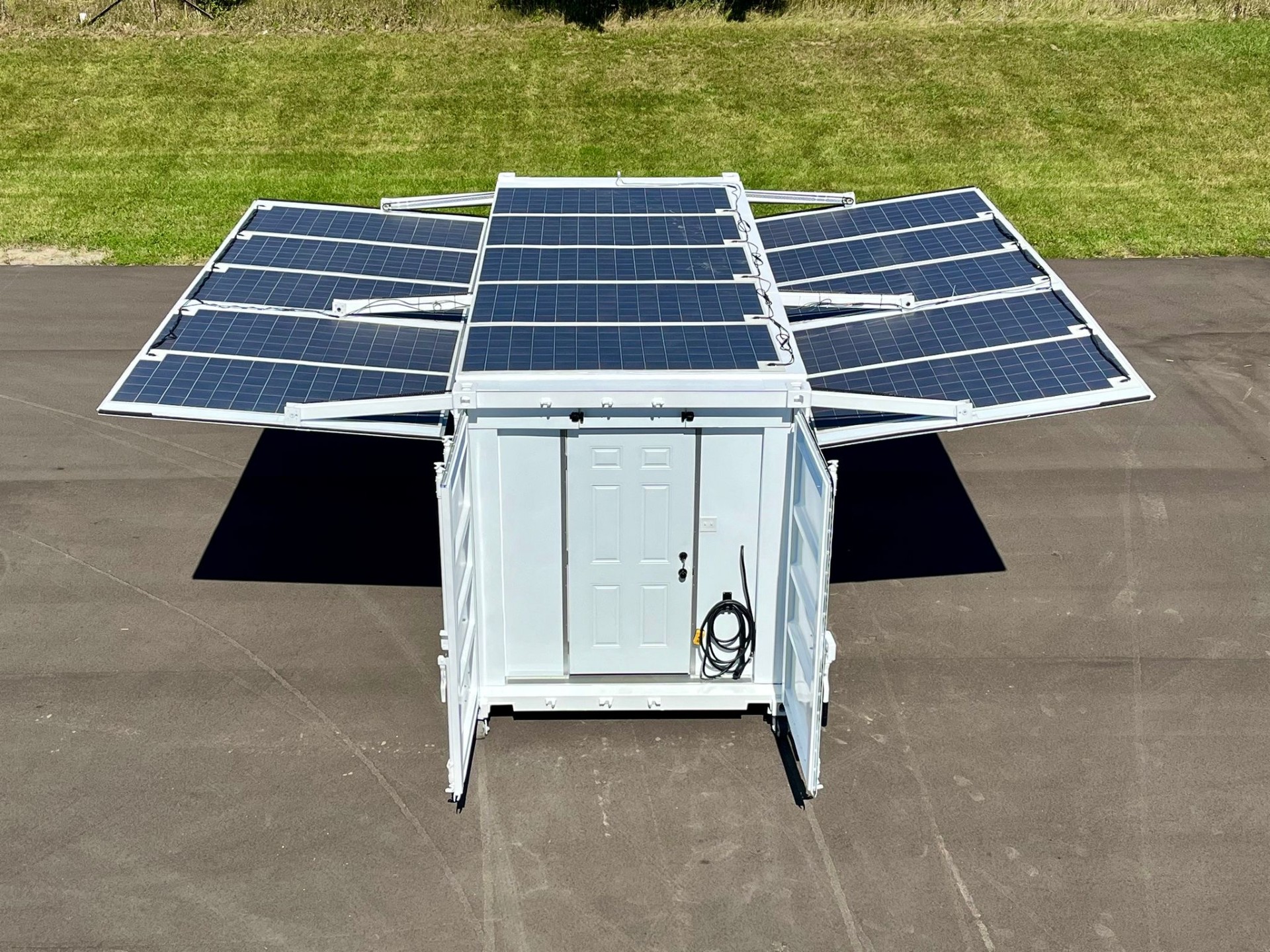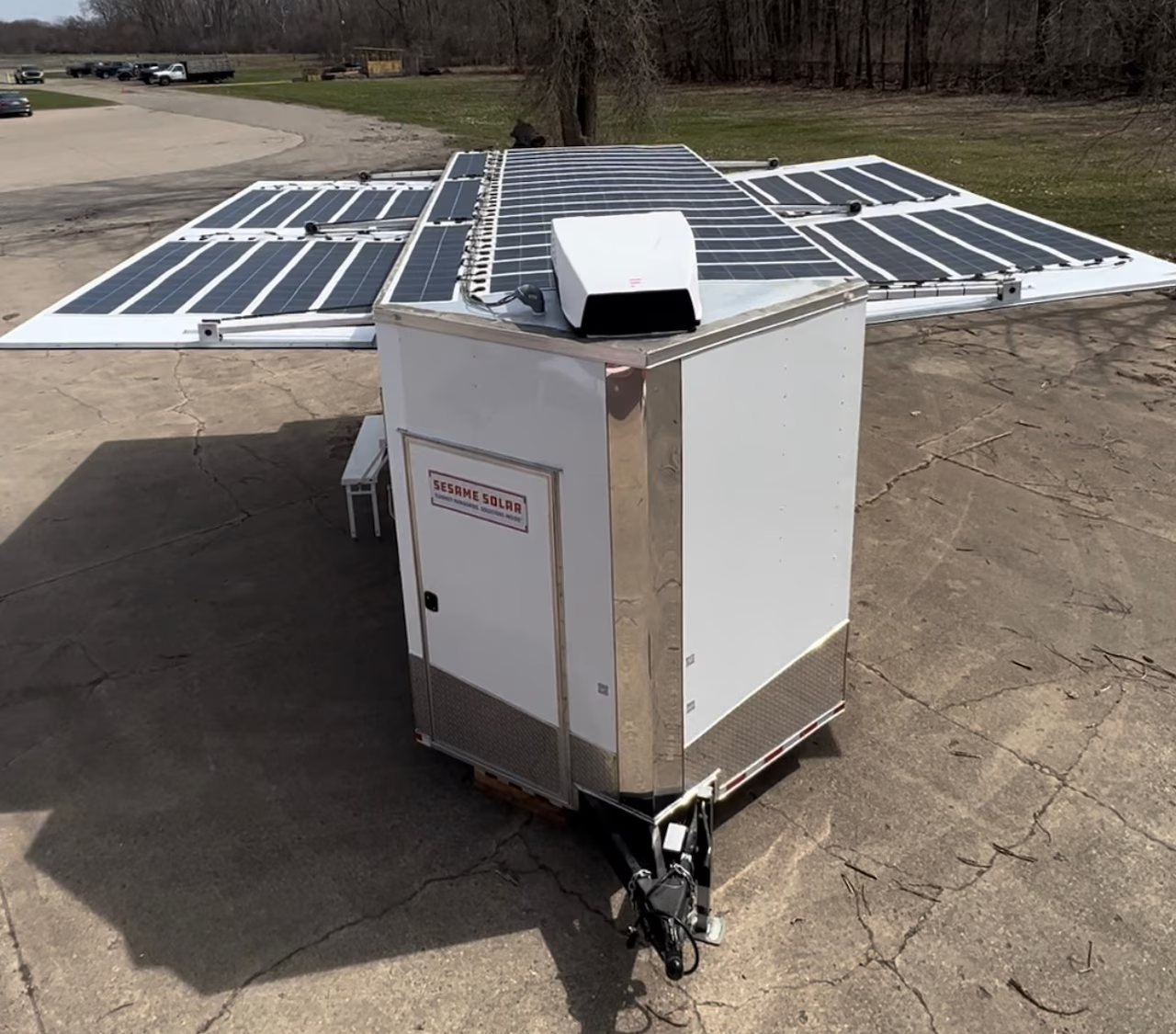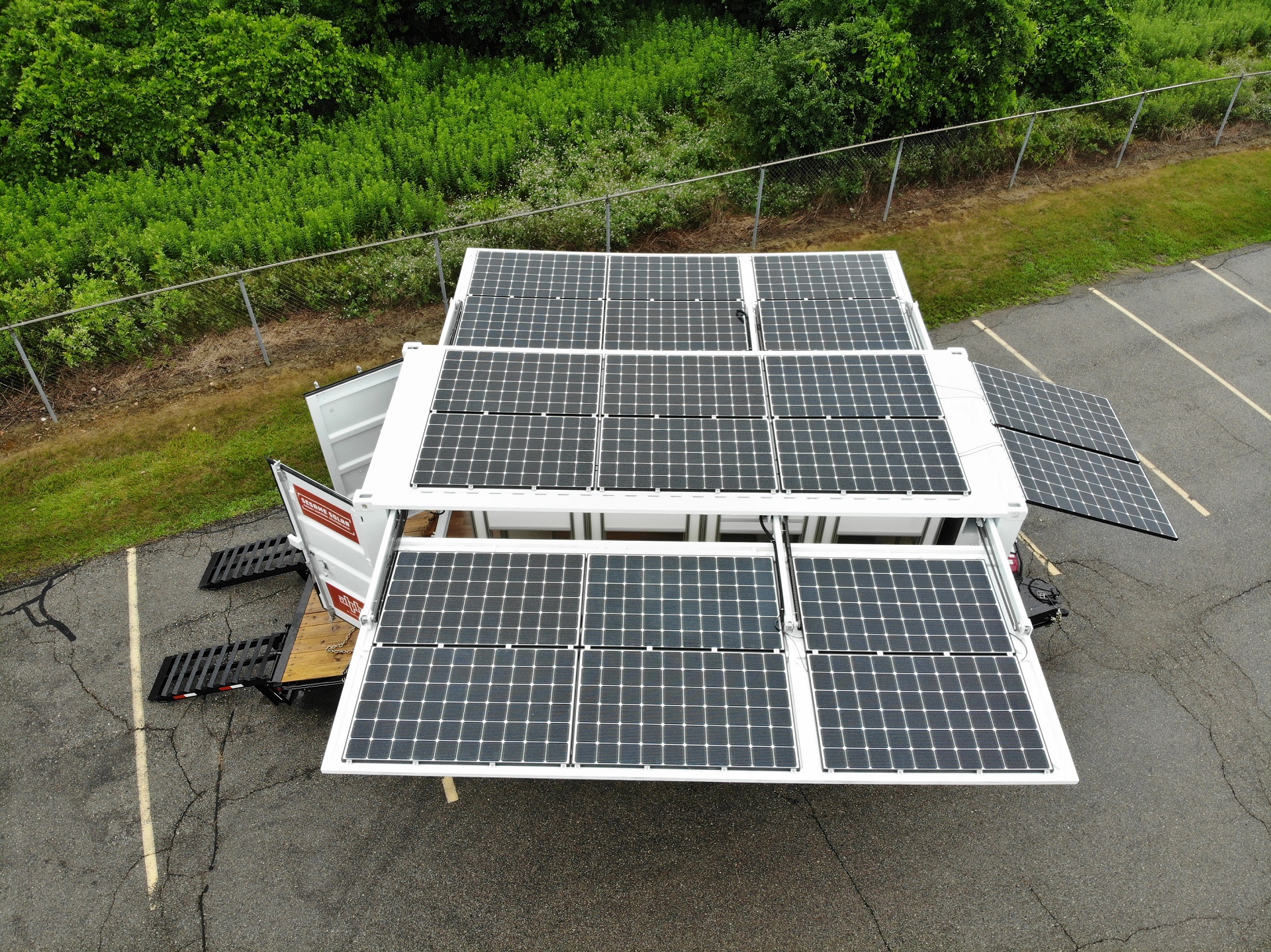Powering the Mission: Why the U.S. Military Is Investing in Mobile Nanogrids

In modern defense operations, energy is as critical as ammunition and intelligence. Every radar, satellite uplink, and medical tent depends on reliable power. For decades, the U.S. military has relied on fuel convoys and diesel generators to meet that need. While effective, these systems come with high logistical costs and operational risks.
Now, a new generation of mobile nanogrids is transforming how the armed forces power missions. Compact, transportable, and independent, these systems deliver stable energy wherever and whenever it’s needed — without relying on vulnerable supply lines. From forward operating bases to humanitarian relief missions, mobile nanogrids are redefining what energy security means for the military.
The Military’s Energy Challenge
Energy supply remains one of the most complex challenges in military operations. Powering remote or deployed units demands precision logistics, which often expose personnel to risk and strain resources.
- Fuel convoys as high-risk targets: Fuel transport remains a top vulnerability. Convoys are predictable, costly, and require large protective details.
- Maintenance burdens: Diesel generators require frequent servicing, spare parts, and trained personnel to keep running under harsh conditions.
- Expanding energy demands: Communications systems, surveillance tools, and advanced vehicles are consuming more power than ever before.
To meet these growing requirements, the Department of Defense (DoD) is pursuing mobile and resilient power systems that strengthen mission readiness and reduce reliance on vulnerable infrastructure.

What Are Mobile Nanogrids?
A mobile nanogrid is a self-contained power system that integrates generation, storage, and smart controls into one rapidly deployable unit. Unlike large, fixed microgrids, nanogrids are designed for mobility, speed, and flexibility.
Core features include:
- Portable design: Units can be towed, airlifted, or shipped to remote or contested areas.
- Fuel-optional operation: Systems can integrate multiple power sources, including solar, hydrogen, or auxiliary generators, depending on mission needs.
- Scalable power: Nanogrids can operate independently or link together for larger loads.
- Durability: Built for extreme environments — from deserts to arctic deployments.
- Dual-use capability: Equally suited for defense missions and domestic disaster response.
Tactical Use Cases
1. Forward Operating Bases (FOBs)
Mobile nanogrids provide a reliable, independent power source for forward bases operating far from established infrastructure. By generating energy on-site, they reduce fuel transport needs, enhance operational security, and keep mission-critical systems running continuously.
2. Battlefield Communications
Military communications rely on uninterrupted energy. Nanogrids ensure that command posts, data relays, and satellite systems remain online even when primary infrastructure fails — maintaining command and control in dynamic or contested environments.
3. Medical and Field Support
Deployed medical units depend on steady power for surgical equipment, refrigeration, and lighting. Nanogrids deliver quiet, stable energy without exhaust fumes or noise that can compromise operations.
4. Electrified Mobility and Equipment Support
As defense platforms evolve toward electric or hybrid power, mobile nanogrids serve as field charging hubs, supporting ground vehicles, drones, and surveillance systems. Their silent operation provides tactical advantages by reducing noise and heat signatures.
5. Humanitarian and Emergency Response
Military units frequently support disaster relief efforts. Mobile nanogrids can be deployed immediately and set up within 15 minutes to power command centers, logistics hubs, and shelters during hurricanes, floods, or wildfires — strengthening national readiness and civilian recovery operations.

Energy Independence as a Tactical Advantage
Energy independence enhances operational flexibility and survivability. By minimizing dependence on fuel convoys or fragile grid connections, the military gains several strategic benefits:
- Reduced risk exposure: Fewer convoy operations mean fewer personnel in harm’s way.
- Enhanced mobility: Bases and units can relocate quickly without waiting for supply lines.
- Operational continuity: Nanogrids ensure power even when infrastructure is disrupted.
- Stealth benefits: Quiet, low-signature operation supports covert and tactical missions.
In short, nanogrids provide a decisive tactical edge — enabling forces to move faster, stay longer, and operate more securely.
The Dual-Use Strategy
One of the strongest advantages of mobile nanogrids is their dual-use design. Technologies built for defense also strengthen domestic resilience and emergency response capabilities.
- Defense Benefits: Reliable power for deployed units, reduced fuel dependency, improved energy logistics.
- Civilian Benefits: Emergency power for communities, hospitals, and first responders after disasters.
This dual-purpose model ensures every dollar invested in military power infrastructure also enhances the nation’s ability to respond to domestic crises.
Lessons from Past Operations
In past operations, energy logistics often became one of the greatest risks to mission success. Studies from Iraq and Afghanistan revealed that up to 70% of supply convoys were dedicated to delivering fuel and water. Each trip required extensive manpower and carried the constant risk of attack.
By integrating mobile nanogrids into operations, the military can reduce the number of convoys, conserve resources, and redirect personnel toward mission-critical objectives.
Similarly, during major domestic emergencies such as hurricanes, the military’s rapid-deployment capability becomes vital. Mobile nanogrids can be transported by truck or aircraft to restore power within hours — supporting hospitals, field kitchens, and command centers until the main grid is restored.
Future Outlook: Building a More Resilient Force
The Department of Defense continues to expand its investment in modular, adaptable power systems that enhance mission reliability. Mobile nanogrids will play a central role in achieving that vision.
As defense platforms, vehicles, and weapons systems become increasingly electric, mobile power systems capable of operating independently will be essential. The result is a more agile, self-sufficient, and technologically advanced military force capable of responding to any contingency — domestic or abroad.

Key Takeaways
- Energy equals mission readiness: Power reliability directly affects operational effectiveness and troop safety.
- Mobile nanogrids reduce risk: By minimizing fuel convoys, they enhance security and lower logistical burdens.
- Field flexibility: Systems can be deployed rapidly and operate in virtually any environment.
- Dual-use efficiency: Investments benefit both defense operations and national disaster response capabilities.
- Future-ready infrastructure: As defense assets electrify, mobile nanogrids will anchor the next generation of field energy systems.
FAQ
Q1: Why is the military interested in mobile nanogrids now?
The growing complexity of operations — from communications to electrified vehicles — has increased the military’s energy needs. Traditional fuel-based systems are costly, difficult to maintain, and vulnerable to disruption. Mobile nanogrids provide dependable, modular power without the constant need for fuel delivery. Their flexibility and portability make them an ideal fit for both forward operations and homeland response efforts.
Q2: How do mobile nanogrids improve safety for deployed forces?
Fuel convoys have historically been one of the most dangerous logistical missions. Nanogrids reduce that risk by producing power on-site, eliminating or reducing the need for resupply convoys. They also operate quietly, with low heat signatures, helping maintain stealth in sensitive missions. Most importantly, they ensure that critical systems — from communications to medical equipment — stay operational in all conditions.
Q3: Are mobile nanogrids compatible with current military equipment?
Yes. Mobile nanogrids are designed with modular connections and standard interfaces, allowing them to integrate with existing power infrastructure, vehicles, and tactical systems. They can support a range of voltages and power needs, making them adaptable for command posts, communications gear, or field hospitals.
Q4: What are the cost benefits of mobile nanogrids compared to diesel generators?
Although the initial investment may be higher, nanogrids deliver significant long-term savings. By cutting fuel transport costs, reducing maintenance requirements, and minimizing personnel exposure, they lower the total cost of ownership. Their durability and modular design also extend operational life, offering a strong return on investment.
Q5: How do mobile nanogrids support national resilience beyond military use?
Because they can be deployed quickly and operate independently, mobile nanogrids are equally valuable for civil emergency response. They can restore power after storms, support medical facilities during grid failures, and provide energy for relief efforts. This dual-use flexibility strengthens both defense readiness and civilian preparedness — a clear advantage for national resilience.
Conclusion
Energy reliability is mission reliability. Mobile nanogrids provide the U.S. military with a new level of operational control — secure, adaptable, and self-sustaining power in any environment. By reducing risk, enhancing mobility, and ensuring uninterrupted power, these systems transform energy from a logistical challenge into a tactical strength.
As the military continues to modernize, mobile nanogrids will be at the heart of the next generation of field operations — powering missions wherever the nation’s defense requires.
